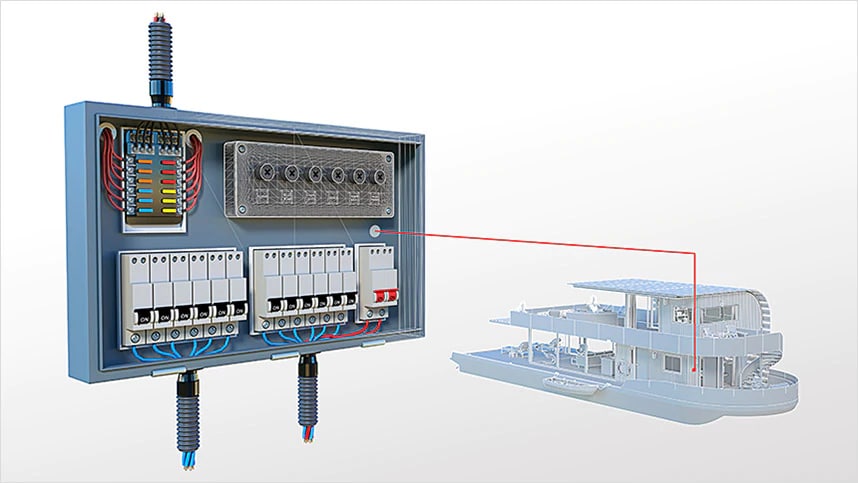Trusted Residential Electrical Design Services for Functional Home Wiring
Trusted Residential Electrical Design Services for Functional Home Wiring
Blog Article
Cutting-edge Electric Design Services for Modern Facilities
The evolution of contemporary facilities necessitates ingenious electrical design services that not only improve operational efficiency yet additionally address sustainability obstacles. As urban atmospheres grow significantly complex, integrating modern technologies such as clever grids and renewable resource resources comes to be extremely important. These developments not just promise to maximize power intake yet also foster resilience against future demands. Nonetheless, the landscape of electrical design is going through quick improvement, motivating a closer exam of arising patterns and their ramifications for lasting infrastructure stability. What might the future hold for those who accept these innovative methods?
Importance of Innovative Electric Design
Cutting-edge electrical design plays a critical role in modern-day infrastructure, affecting not just performance but additionally sustainability. As cities progress and the demand for energy boosts, the need for advanced electric systems comes to be critical. These systems should not only fulfill current demands however additionally expect future development and technological developments.
A well-executed electrical design can substantially reduce energy consumption, therefore lowering functional expenses and minimizing ecological effect. By integrating eco-friendly power sources, such as photovoltaic panels and wind generators, cutting-edge styles can improve energy independence and resilience. Smart grid innovations allow for real-time monitoring and administration of power distribution, maximizing performance and minimizing waste.
Security is one more critical facet of electric design. Applying innovative innovations and rigorous standards can minimize risks connected with electric failings, ensuring a secure setting for locals and organizations alike. Additionally, ingenious styles promote versatility, enabling frameworks to integrate emerging innovations perfectly.
Secret Fads in Electric Design
As the landscape of electrical design remains to progress, a number of crucial fads are forming the future of the sector. One considerable pattern is the integration of wise technology into electrical systems. The expansion of the Internet of Things (IoT) has allowed real-time monitoring and control of electrical gadgets, boosting efficiency and promoting anticipating maintenance.
Another fad is the expanding emphasis on modular design. This approach permits scalable and adaptable remedies, allowing framework to adjust to altering requirements without substantial remodellings. Furthermore, making use of sophisticated simulation tools and Building Details Modeling (BIM) is becoming increasingly common, improving the design process and boosting partnership amongst stakeholders.
Moreover, innovations in materials scientific research are causing the development of lighter, more durable, and energy-efficient elements. This development is specifically essential for high-performance structures and infrastructure projects.
Lastly, there is a significant change in the direction of data-driven decision-making - industrial electrical design. Leveraging information analytics aids developers optimize systems for efficiency and cost-effectiveness. Together, these patterns signify a transformative age in electric design, improving capability, sustainability, and strength in modern-day framework
Sustainable Power Solutions
Sustainable energy solutions are significantly ending up being a vital emphasis in electrical design, mirroring a broader dedication to ecological obligation and resource effectiveness. These solutions aim to minimize environmental impact while enhancing energy usage in numerous frameworks, from residential structures to big business centers.
One of the foremost approaches entails the integration of renewable resource sources, such as solar panels and wind generators, right into electric systems. This not only lowers reliance on nonrenewable fuel sources yet likewise improves energy durability. Additionally, ingenious power storage space systems, such as advanced batteries, allow efficient management and circulation of energy, making sure that surplus energy produced during peak production can be used throughout high demand periods.
In addition, energy-efficient design methods are being embraced to boost total system efficiency. This consists of utilizing energy-efficient lighting, cooling and heating systems, and wise building technologies that monitor and adjust power usage based on occupancy and environmental problems.
Smart Grid Technologies
The implementation of sustainable energy options normally leads to the expedition of clever grid technologies, which play a pivotal role in modernizing electrical systems. Smart grids leverage advanced communication technologies and information analytics to improve the integrity, efficiency, and sustainability of electricity go to this site circulation. By incorporating electronic innovation with typical grid framework, these systems assist in real-time tracking, automated control, and improved decision-making capacities.
One of the key functions of smart grids is their capability to fit eco-friendly energy sources, such as solar and wind power. This flexibility not just decreases dependency on nonrenewable fuel sources but likewise enables a much more decentralized energy manufacturing design. Smart grids enable need feedback programs, where consumers can adjust their energy use based on real-time pricing, therefore promoting energy conservation and reducing peak load demands.
Additionally, smart grid innovations enhance grid strength by enabling quicker recognition and resolution of outages, inevitably lessening downtime. With predictive upkeep and analytics, energies can improve and optimize procedures solution distribution. As communities and cities continue to progress, smart grid modern technologies are necessary for constructing a lasting and efficient electrical framework that fulfills the needs of contemporary society.

Future-Proofing Framework
To guarantee lasting viability and versatility, future-proofing framework is vital in the swiftly progressing landscape of electrical design services. As modern technology advancements and energy needs change, it is crucial that electric systems are created with flexibility in mind. This entails including scalable services that can fit future upgrades without demanding considerable overhauls.

Additionally, sustainability must be a cornerstone of future-proofed styles. Making use of renewable power resources, such as solar and wind, and optimizing power effectiveness lower dependency on nonrenewable fuel sources, lining up with international initiatives to combat climate change.
Verdict
By focusing on sustainability, effectiveness, and adaptability, these solutions address the developing demands of energy systems. The combination of clever grid innovations and sustainable energy services improves durability and minimizes functional prices.
A well-executed electrical design can substantially decrease power consumption, thus decreasing functional prices and reducing ecological influence. By integrating renewable power resources, such as solar panels and wind generators, innovative styles can boost power self-reliance and resilience. In addition, innovative power storage space systems, such as sophisticated batteries, allow effective management and circulation of energy, making sure that excess energy produced during optimal production can be made use of throughout high demand periods.
Clever grids enable need response my company programs, where customers can change their power usage based on real-time prices, consequently promoting power conservation and minimizing peak tons needs. (residential electrical design)
As innovation advances and power needs change, it is essential that electric systems are designed with flexibility in mind.
Report this page